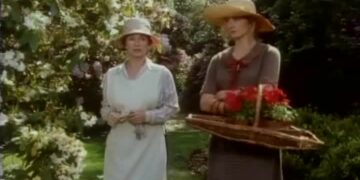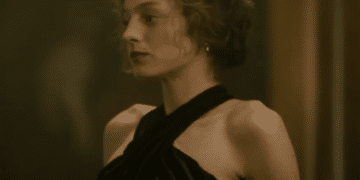D. H. Lawrence, born on September 11, 1885, in Eastwood, England, was a literary genius whose works continue to captivate readers even today. Despite his untimely death in 1930 at the age of 44, Lawrence’s legacy lives on through his groundbreaking novels, poetry, and essays. His unique writing style and exploration of controversial themes have made him a prominent figure in 20th-century literature. In this article, we will delve into the life and works of D. H. Lawrence, shedding light on his early years, literary career, relationships, and the enduring impact of his writings.
D. H. Lawrence’s Early Life and Upbringing
D. H. Lawrence was born into a lower-middle-class family in the small mining town of Eastwood. His father, Arthur Lawrence, was a coal miner, while his mother, Lydia, was a former schoolteacher. Growing up in a working-class environment deeply influenced Lawrence’s perspective on life and served as a recurring theme in his writings. Despite financial challenges, Lawrence’s parents recognized his talent and encouraged his pursuit of education. Lawrence attended Nottingham High School, where his passion for literature began to blossom.
Exploring D. H. Lawrence’s Literary Career
Lawrence’s literary career took off with the publication of his first major novel, “The White Peacock,” in 1911. This marked the beginning of a prolific period for Lawrence, during which he produced some of his most renowned works, including “Sons and Lovers” (1913), “The Rainbow” (1915), and “Women in Love” (1920). His bold exploration of sexuality, psychology, and social class challenged societal norms and garnered both acclaim and controversy.
Intriguing Tidbits about D. H. Lawrence’s Life and Relationships
Beyond his literary achievements, D. H. Lawrence led a fascinating life filled with intriguing tidbits. Lawrence’s love life and friendships were a source of both inspiration and turmoil. His marriage to Frieda von Richthofen, a German aristocrat, caused scandal in England due to her nationality and her previous marriage. Despite the challenges they faced, Lawrence and Frieda remained together until his death. Lawrence also formed close relationships with fellow writers and artists, including the influential American poet, Ezra Pound.
The Enigmatic Love Life of D. H. Lawrence
D. H. Lawrence’s love life was as enigmatic as his writing. His relationship with Frieda was unconventional and passionate, often marked by intense emotional and physical connections. The couple traveled extensively, seeking inspiration and solace in different parts of the world. Lawrence’s exploration of love and sexuality in his works is intricately tied to his personal experiences, making his writing deeply personal and resonant.
D. H. Lawrence’s Best Quotes and Philosophical Insights
D. H. Lawrence’s writings are replete with profound quotes and philosophical insights that continue to resonate with readers. His keen observations on human nature, love, and the pursuit of happiness offer profound wisdom. One of Lawrence’s most famous quotes is, “I never saw a wild thing sorry for itself. A small bird will drop frozen dead from a bough without ever having felt sorry for itself.” This quote encapsulates Lawrence’s belief in the power of nature and the resilience of the human spirit.
A Glimpse into D. H. Lawrence’s Writing Style and Themes
D. H. Lawrence’s writing style is characterized by its lyrical prose, vivid descriptions, and psychological depth. He masterfully weaves together narrative and introspection, creating a rich tapestry of emotions and ideas. Lawrence’s works often explore themes such as the struggle between instinct and civilization, the complexities of human relationships, and the tension between the individual and society. Through his evocative storytelling, Lawrence invites readers to ponder the deeper truths of existence.
The Main Settings of D. H. Lawrence’s Books
D. H. Lawrence’s books are known for their vivid and evocative settings. From the industrial landscapes of his childhood to the sun-drenched landscapes of Italy and the rugged beauty of the American Southwest, Lawrence’s novels transport readers to a variety of locales. His keen attention to detail and atmospheric descriptions make the settings come alive, immersing readers in the world he created.
The First and Last Books Written by D. H. Lawrence
The first book written by D. H. Lawrence was “The White Peacock,” published in 1911. This early work laid the foundation for Lawrence’s exploration of themes that would become central to his later writings. On the other hand, the last book Lawrence completed before his death was “Lady Chatterley’s Lover” (1928). This controversial novel, which explores the passionate affair between an aristocratic woman and her gamekeeper, faced censorship and legal challenges upon its publication. However, it has since become one of Lawrence’s most celebrated and widely read works.
The Screen Adaptation of Lady Chatterley’s Lover
“Lady Chatterley’s Lover” has not only been a popular novel but has also been adapted for the silver screen multiple times. The most famous adaptation is the 1981 film directed by Just Jaeckin, starring Sylvia Kristel and Nicholas Clay. This adaptation brought Lawrence’s controversial story to a wider audience and sparked renewed interest in his work. The film showcased the power of Lawrence’s storytelling and further cemented his reputation as a literary icon.
Other Artists Who Inspired D. H. Lawrence’s Work
D. H. Lawrence drew inspiration from a wide range of artists and thinkers. One notable influence on his writing was the French novelist Gustave Flaubert, whose precise and detailed prose style resonated with Lawrence. He also found inspiration in the works of the American poet Walt Whitman and the German philosopher Friedrich Nietzsche. Lawrence’s ability to synthesize diverse influences and incorporate them into his own unique voice contributed to the richness and originality of his writings.
Recommended Books by Other Writers for Fans of D. H. Lawrence
If you enjoyed D. H. Lawrence’s works and are looking for similar authors to explore, here are five recommendations to consider:
- “To the Lighthouse” by Virginia Woolf: Woolf’s introspective novel delves into the complexities of human relationships and the passage of time.
- “A Passage to India” by E.M. Forster: Like Lawrence, Forster examines the clash of cultures and the exploration of personal freedom in this powerful novel set in British colonial India.
- “The Great Gatsby” by F. Scott Fitzgerald: Fitzgerald’s masterpiece explores themes of love, wealth, and the elusive American Dream, much like Lawrence’s works.
- “The Bell Jar” by Sylvia Plath: Plath’s semi-autobiographical novel delves into the struggles of a young woman in a society constrained by gender expectations, echoing Lawrence’s exploration of societal constraints.
- “The Catcher in the Rye” by J.D. Salinger: Salinger’s iconic coming-of-age novel, with its introspective and rebellious protagonist, captures the alienation and search for identity that are recurring themes in Lawrence’s works.
Creating a Buying Guide and Gift Ideas for D. H. Lawrence Enthusiasts
For avid fans of D. H. Lawrence, there are numerous options to explore. Here are some gift ideas and a buying guide to help you navigate the world of Lawrence:
- Books by D. H. Lawrence: Start with his most celebrated works such as “Sons and Lovers,” “Women in Love,” and “Lady Chatterley’s Lover.” These novels provide a comprehensive introduction to Lawrence’s style and themes.
- Biographies: Discover more about Lawrence’s life through well-researched biographies, such as “D. H. Lawrence: The Life of an Outsider” by John Worthen and “D. H. Lawrence: The Story of a Marriage” by Brenda Maddox.
- Literary Criticism: Explore critical analyses of Lawrence’s works to deepen your understanding of his writing. Works like “D. H. Lawrence: A Beginner’s Guide” by Geoff Dyer and “D. H. Lawrence: The Rainbow and Women in Love” by Peter Widdowson provide valuable insights.
- Collectible Editions: Consider gifting beautifully bound collectible editions of Lawrence’s works, which often feature insightful introductions and annotations.
- Related Art and Music: Delve into Lawrence’s world by exploring art and music that influenced him. Consider gifting books on the art movements of the early 20th century or CDs featuring classical music from the same era.
Conclusion: The Enduring Legacy of D. H. Lawrence
D. H. Lawrence’s literary genius continues to captivate readers around the world. His evocative prose, exploration of complex themes, and enigmatic personal life have secured his place in the literary canon. From his early life in a mining town to his controversial novels and the enduring impact of his works, D. H. Lawrence’s legacy remains as vibrant and relevant as ever. Whether you are a long-time fan or a newcomer to his writings, delving into Lawrence’s world is an experience that will leave a lasting impression.










